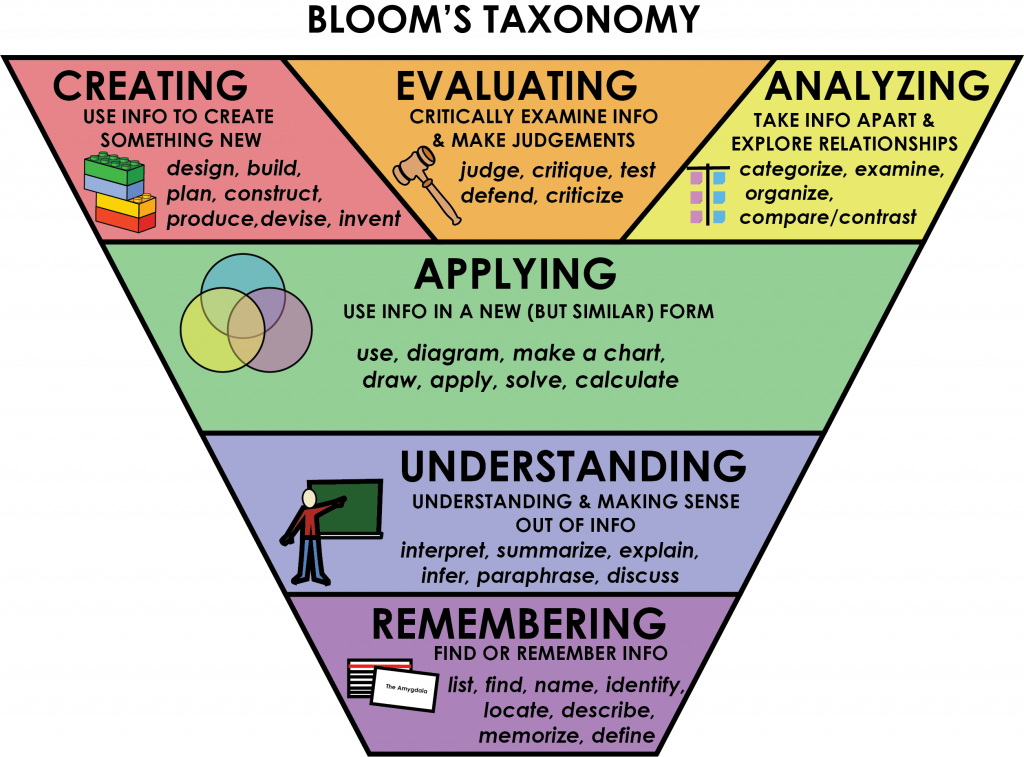14 Define Bloom’s Taxonomy
The categories in the cognitive taxonomy (Krathwohl, 2002, p. 215, Table 3) include:
- remember (knowledge recall) – retrieving relevant knowledge from long-term memory
- understand (comprehension) – interpreting the meaning of information; being able to “translate” knowledge into one’s own words; linking new information to what you already know
- apply – using what you know to do required tasks
- analyze – taking things apart; dissecting; asking “why?”; seeing relationships and how things work
- evaluate – appraising, judging and critiquing the outcomes of any of the other levels
- create (synthesis) – putting things together; building on what you know to create something new; seeing new relationships or making new connections.

Create Questions for Tutoring Using Bloom’s Cognitive Taxonomy
If your tutee doesn’t know the technical language of the subject and what it means, it will be difficult for them to apply, evaluate, analyze, or be creative.
Pick a subject area in which you are qualified to tutor. For each level of Bloom’s Taxonomy listed in the worksheet on the next page.
Develop a questions (or activity) for the student to complete that would show you whether or not your tutee understands the material at that level.
Then, working in pairs and using the worksheet, explain the questions at each level of Bloom’s taxonomy for this subject area that you tutor.
Describe how your questions would allow you to assess how much your tutee knew and what level they were on.
Questioning Activity:
| Level | Question/Activity |
| Remembering | Remembering and Recalling information.
|
| Understanding | Understanding Explaining ideas or concepts.
|
| Applying | Applying information in a familiar situation |
| Analyzing | Analyzing by breaking information into parts to explore relationships. |
| Evaluating | Justifying a decision or course of action.
|
| Creating | Generating new ideas, products, or ways of viewing things
|
Notes and Questions:
Consider and then outline how you will use effective questioning at the right level in your planning for tutoring sessions. Build it into your plan right from the start.

